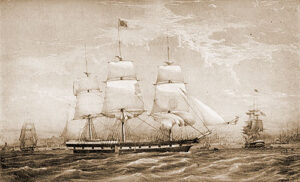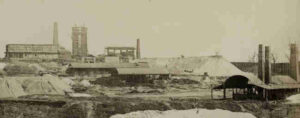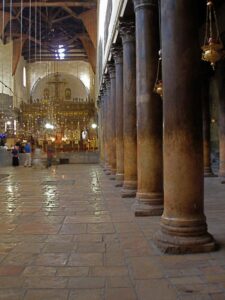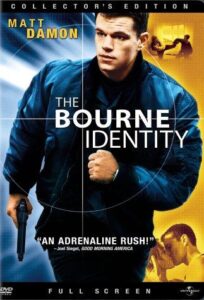Noel Pearson said if the referendum failed to pass he would fall silent. Full stop!
Somebody should remind him. It would be a blessed relief.
Clueless in Gaza
“I would like Gaza to sink into the sea, but that won’t happen, and a solution must be found.” Yitzhak Rabin (1992)
Hamas has poked a sleeping tiger. Now, the Hamas terrorists are likely to learn what other authoritarian aggressors have learned before them: that liberal democracies can be extremely ferocious and supremely effective at war-fighting when roused from their peacetime slumber. As Gen. Dwight D. Eisenhower wrote at the beginning of World War II: “Hitler should beware of the fury of an aroused democracy.” Washington Post
Speaking to the Israeli Knesset, Prime Minister Benjamin Netanyahu warned Iran and Hezbollah, “Don’t test us in the north. Don’t make the mistake of the past. Today, the price you will pay will be far heavier,” referring to Israel’s 2006 war with Hezbollah, which operates out of Lebanon.
Soon after he spoke, the Knesset floor was evacuated as rockets headed toward Jerusalem. Sirens in Tel Aviv prompted U.S. and Israeli officials to take shelter in a bunker, officials said. Boston Globe
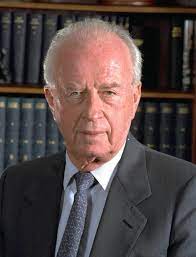
In 1995, I went to Jerusalem when Yitzhak Rabin was Prime Minister. Rabin had been a prominent brigade commander in the Palmach, which was one of the militias that formed the backbone after independence in 1948 of the Israeli Army. The Palmach had been blooded fighting the Vichy French in 1941 in Syria and Lebanon inter alia with Australian troops.
It was a fortunate time to visit Israel when I did in 1995, in particular because Rabin had mastered a living space for the Nation, when there was as much latent hostility surrounding him in the Arab nations supporting the Palestinians. The Jews had suffered discrimination, pogroms, holocausts – all designed to encourage the segregation of the ghetto or the creation of an independent nation.
What I remember with greatest awe about is the Dome on the Rock. This extraordinary building on the Mount, where tradition says Solomon built his Temple, demolished 2,500 years ago by the Babylonians. A long time ago but still an os contentionis. That is the problem, the more you stay in Jerusalem the more you seem to be tripping over religion; but when there is a secular peace, this religious overlay becomes tolerable. I found both the Church of the Nativity in Bethlehem and the Church of the Holy Sepulchre in Jerusalem underwhelming.
However, the highlight was going to Bethlehem, then a ten-minute uneventful taxi ride from Jerusalem. No walls. As we found out, Bethlehem at that time had a significant Christian Palestinian population. One of the young guides was one such Christian, whom the late Chris Brook befriended. They stayed in contact for some years until one day there was no response. Through his contacts Chris tried to find out what had happened. A murky trail of sketchy information ended with bad news – the young fellow had been killed. No further information or at least Chris never told me.

There was a silver star embedded in the floor of the Grotto of the Nativity. Pilgrims bent low to kiss the silver star, with its central hollow where Christ was reputed to have been born.
I cannot remember what I did. Probably saw the people in front of me as an excuse not to bend down; and those with me followed my lead. There were better ways to show my devotion. Then logic kicked in – how the hell would anybody know the exact place of His birth?
The Church’s governance is divided between Roman Catholic, Orthodox and Armenian churches, with the various Oriental Churches given a few nooks and crannies. I passed one such space, and saw two eyes peering out, the rest of the person enshrouded in darkness. I was told later he was a deacon of the Ethiopian Church. The relations between the three landlords are often acrimonious, leading to physical altercation and being dismissive of the others. Not a good look!
Yet since I have been there, during the Second Intifada in 2002, the church was the site of a month-long siege. Christians in the Church gave sanctuary to 50 armed Palestinians wanted by the Israel Defence Forces (IDF) giving them food, water, and protection from the IDF soldiers stationed outside.
 My memento of Israel was a necklace which I purchased for my wife in Bethlehem. The Stones of Eilat are a gemstone found only in Israel Eilat is the actual site, and it is no longer mined. The stone is a green-blue mixture of several secondary copper minerals including azurite, chrysocolla, malachite, and turquoise. It is a beautiful necklace, and recently I read that much sold as genuine is in fact not so. My wife says it’s genuine.
My memento of Israel was a necklace which I purchased for my wife in Bethlehem. The Stones of Eilat are a gemstone found only in Israel Eilat is the actual site, and it is no longer mined. The stone is a green-blue mixture of several secondary copper minerals including azurite, chrysocolla, malachite, and turquoise. It is a beautiful necklace, and recently I read that much sold as genuine is in fact not so. My wife says it’s genuine.
I had gone to a Conference in Jerusalem and even then you were subject to detailed questioning by young officious Israelis. I had flown in on a British Airways 737, because given the length of time of interrogation, any bigger plane would have compounded an already intolerable situation. It was not much different from the departure grilling. Sarcasm was not a quality much appreciated, so you just resigned yourself to the rudeness.
What I found the most confronting were the ultra-orthodox Jews who seemed to inhabit a cavern alongside to the Wailing Wall when they were not praying at the Wall. One bearded man in the black gear so typical of his form of Judaism engaged me in conversation. The filth that he spewed out about the Palestinians took me aback. Here was a protected species, who avoided military service while urging the elimination of all non-Jews. I cut short the conversation, at which point he lifted his beard to show me his tracheostomy. Good one … whatever your name was.
I’m not surprised that an ultra-orthodox Jew who, not long after, assassinated Rabin. Yet these people are now running the government, providing the current Prime Minister Netanyahu with a shield.
As the Guardian has said “Netanyahu, who is facing a corruption trial and weekly mass protests against his coalition’s attacks on the judiciary, hopes that a military victory might save his job.”
Nobody can countenance the Hamas raid with their associated brutality. However, the response of unleashing all your advanced weaponry has been shown to be self-defeating unless you win over the population – see Vietnam, Afghanistan, Iraq. Thus an Israeli response of the magnitude threatened will only deepen the hatred which will mean nothing in the longer term for the stability of an Israel converted into a ghetto.
Garrisoning a hostile population is very expensive unless as some of the right wing fanatics seem to suggest – kill the whole population and there will be nothing left to garrison.
The population is mostly children. Are the Israelis really intent on killing every child in Gaza, just short of a million? The images of such carnage would be of the same order as the concentration camps, with bodies piled high. The Baptist hospital bombing in Gaza City, whoever did it, reinforces that point.
Invasion would produce a low success rate, if they wish to rescue any live hostages. This is not Entebbe, where the Israeli hostages were rescued by Israel commandos and where Netanyahu’s brother, one of the commandos was himself killed. In this case, the number of Jewish hostages killed would pale in comparison with Palestinian casualties.
Eliminate Gaza; eliminate Israel as a democracy. So heed the words of Dwight Eisenhower, who knew the meaning of “restraint”, but emphasises that he was speaking for democracy not for an embattled faux-theocracy, however described.
In conclusion, having been in Israel in a time of comparative peace, let me say something briefly about the difference between Rabin and Netanyahu. Rabin was an honourable warrior.
Chiefly, the right light?
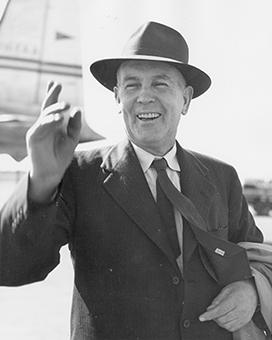
We have a great objective – the light on the hill – which we aim to reach by working the betterment of mankind not only here but anywhere we may give a helping hand. If it were not for that, the Labor movement would not be worth fighting for. Ben Chifley (1949)
I’ve liked writing, but like many who write, I probably over-estimate my ability. When I look back, I have been fortunate in many ways, but choosing to do medicine was the wrong pathway. By that I mean that as I had been seen as a “swot” at school, amassing a library of prizes through my school years, I would naturally gravitate to an area where I excelled. I wrote as well as anybody at school of my vintage, except one guy who had an immense talent but squandered it.
But I didn’t follow a similar course. As I grew older, I realised how much I loved words, but at the time I was faced with a combined course with law as my tertiary destination. It has been convenient for me to blame my father for pushing me into medicine but being academically bright had not served me well at school. Languages were taught appallingly, and besides Latin, only French and German were available. Journalism, in which I would have found the same collegality as I did in medicine, was never an option. There was no obvious role model for this, although I knew Chester Wilmot, the acclaimed war correspondent was at school with my father.
The other area was the armed forces. I remember a couple of boys who went off to the Naval College as early recruits. One of my best friends went through the training, and when we talked, I was lucky that I did not choose that route; but anyway, I would have failed the medical, as I did for National Service. Flat feet, calcanea vera causing spastic peroneal muscles – a recipe for being unable to walk the next day after marching was the reason. Marching for a prolonged period thus was just not an option, especially when compounded with my eyesight being afflicted with myopia, astigmatism and strabismus.
What undertaking Medicine gave me was an enjoyable sense of collegiality. From being an oddball on the fringes at school, I became an oddball in the centre of the action at the University for a few years. I found out my place when I achieved a leadership position, I had an intuitive grasp of how meetings worked. The ability to work with the knowledge that today’s allies may be tomorrow’s adversaries was an essential ingredient for collegiality that I found out. Then, if resolution could only be achieved by conflict resolution, the art of successful collegial alliances was crucial.
Throughout my professional life I have been driven by what in society I perceived as in need of change. A recurrent theme of such a desire to see change is that I always outlived my welcome, because in pursuing change I upset so many of those whose comfort zone is the status quo, as the collegiality with this group begins to fray. Hence, the wider my ability to shift my collegial scenarios – reinvent oneself every five years – helps if it can be managed. When I hear somebody is a “change agent”, that person is the direct opposite. They mistake the light on the hill for their guttering candle.
One can always live too long, and there is ever-diminishing collegiality, the essential driver for what I used to achieve. People stop listening to you. People pass away. Then I have reverted to that lonely teenager on the fringe, because equally I am alone in my old age.
In the end collegiality is ephemeral, whereas dynasty is not – and that enables any legacy of my lifetime to be forgotten or dismantled. But such is life and mate, the light on the hill, as I’m about to depart, has been obscured by the fog that will never lift.
An Uncommon Birri (Queensland Channel Country) and Guugu Yimidhirr (Cooktown) Woman
Thank God, the referendum is over. I was heartily sick of the mantra that Aboriginal people are the oldest civilisation in the world, and the parade of Aboriginal professors mouthing elitist “we know best for you whitefellas, while at the same time not being prepared to cope with the criticism of the structure of the so-called campaign.” I am sick of being asked to come on a journey, to walk in their shoes.
The referendum was soundly defeated. Everyone seems to be forgetting that when the referendum was being mooted, the “YES” was over 65 per cent at the outset, and still 60 per cent at the time when the Cabinet actually decided on the referendum, and the question Australians over the age of 18 years would vote upon in placing the “Voice” in the Australian Constitution.
It is hard to take the aim of closing the gap or other catchphrases that are easy to mouth, but have been of no moment in improving the marginalised Aboriginal people, without having a definite set of aims. Let us take the medical profession. Over the past 40 years, since the first Aboriginal doctor graduated, there have been over 520 medical graduates who are Aboriginal. This is thus evidence of developing a professional stream; but how many Aboriginal medical graduates are the “gap-closers”. How many of these should be active clinicians rather than advocates in administrative roles?
Therein lies the problem. The “yes” campaign group was led by a group of self-styled academic Aboriginal intellectuals using the Uluru Statement as their talisman. The problem with the document is that it didn’t speak in the language of the people it was supposed to represent, and its uncritical acceptance by the Australian community. The Government’s poor decision to base the referendum solely on this document has been borne out. For instance, the use of “Thither”. Who uses that archaic word?
The aim now should be to replace the Aboriginal academic hierarchy who were the “leaders” of the “yes” camp by a younger group more able to connect with their white contemporaries.
How should this be done?
The next Governor General should be an Aboriginal person – relatively young, not one of those who were part of the Uluru Statement. Not one of those Aborigines who have been awarded academic titles, as though colonial vestments substitute for wisdom. It needs to be someone who can champion the connection to the oral traditions and traverse the wide variety of these traditions.
For unlike the indigenous people of other countries, how many of these aspirants have met the number of Aboriginal mobs crammed into one country, where the traditions have developed in a way that the term First Nation papers over the atomisation of the Aboriginal people which has occurred over the eons in which they roamed the countryside.
Because so much of the oral tradition remaining is linked into the art, much of the remaining traditions have been disrupted, although whitefella involvement in recording some of language and subsequent phonetic interpretation should be acknowledged, as should those elders who have maintained the traditions of culture without political contamination.
This above provides the background.
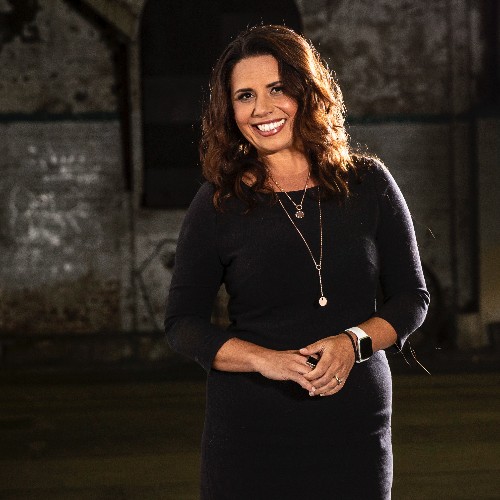
My vote would be for Tanya Denning Orman, described as a Birri (Queensland Channel Country) and Guugu Yimidhirr (Cooktown) woman from Central and North Queensland.
She has both grace and gravitas. She is strong enough not to be engulfed by the communal structure of Aboriginal society, where the pressure for sharing everything leads often to the lowest common denominator rather than the highest common factor.
Moreover, she is not a token but someone who could preside over this elusive treaty, because in support of the referendum she has travelled widely, and finally she exudes optimism. In other words, she has already trod the traditional pathway of a Governor-General. She has the qualities to emulate the first woman in the post, Quentin Bryce. Moreover, she would have five years to effect what the referendum failed to do – to bring about unification of intention, and yet still be young enough not to be discarded with that title consigned to the has-beens – “emerita” at the end of her term.
The Torres Strait. Where are You?
The Torres Strait Islanders have been linked to the recently defeated Referendum with the Aboriginal People.
As far as I can determine, one advocate was Isabella Higgins, a young ABC journalist who is a Torres Strait Islander. Ms Higgins was awarded the 2019 Walkley Award for Young Australian Journalist of the Year.
I have written about her. I cannot find any contribution from her reviewing the place her Islander people actually played. In fact, I cannot find any intervention; any statements issued by the Torres Strait Islander leadership. Who are the leaders?
Vonda Malone has been the CEO of Torres Strait Regional Authority since last year. The following excerpt from her bio says it all. “With more than 20 years of experience working across 3 levels of government, specialising in Indigenous Affairs, she brings a unique international perspective to the role through her positions with both the Department of Foreign Affairs and Trade and the United Nations Office of the Human Rights Commission, Geneva.”
She had been the Mayor of the Torres Strait. She is thus the complete bureaucrat, whose professional life has been lived away from the Torres Strait until she returned in 2016.
The Chair of the Authority is a retired RAN maritime engineer, Napau Pedro Stephen. Again I can’t remember him being mentioned during the referendum. Who I do remember is Gaetono Lui, who chaired the Authority in the 1990s – a natty dresser with dark glasses, whose role model seemed to be some of the Caribbean leaders. Not the picture of disadvantage.
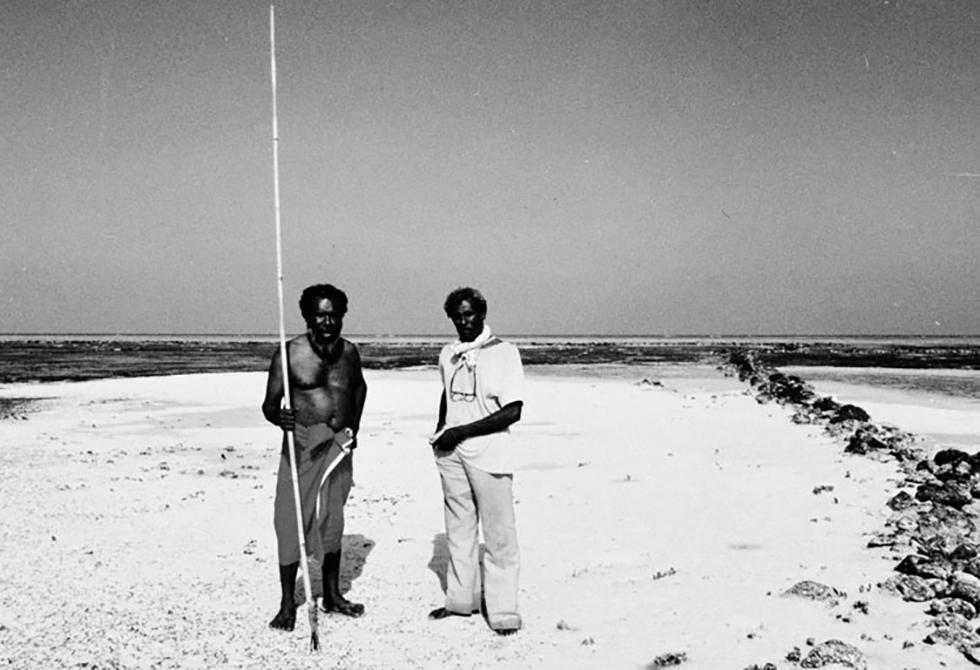
Above all, the Torres Strait Islander, who has been far and away the most influential, was Eddie Mabo, who came from the remote Murray Island in the Strait. The High Court sided with his contention that the indigenous retained rights which were not extinguished by white occupation of the lands.
The decision led to the Native Title Act (1993) which created a framework that recognises Aboriginal and Torres Strait Islander peoples have rights to certain land because of their traditional laws and customs. It allows access to land for living, traditional purposes, hunting or fishing and to teach laws and customs on the land. Mabo died before the High Court decision was handed down.
Some may dispute that there have been Aboriginal people who have made as big a contribution – a person such as David Unaipon, the man on the $50 note, a recognition of the Aboriginal genius adapted to whitefella society or the 200 Wave Hill stockmen who walked off the Vestey’s property in 1966, and whose land claims were ultimately recognised by the Whitlam government symbolised by the soil poured by Gough over the Wave Hill leader, Walter Lingiari’s hands in 1975. Neither were much quoted as exemplars of Aboriginal success, because it may have compromised the narrative of oppression, incarceration and chronic disease.
A young Aboriginal Governor General has a chance to change that narrative using the positive lesson at set out above, with more involvement of the Torres Strait people.
Crossing the Rabid Jordan
On July 12, 2022, Jordan tweeted to the Washington Examiner that a report of a 10-year-old Ohio girl traveling to Indiana to obtain a legal abortion after being raped was a lie. He deleted the tweet on July 13 after the rapist was arrested by police and confessed to raping the girl twice, and police confirmed that the report of her abortion in Indiana was accurate.
Until he withdrew on the last day, the race for the Speaker of the House of Representatives has been centred on Jim Jordan, the extremist representative from small town Ohio being elevated to Speaker. Before he was elected to Congress, he had form as an assistant wrestling coach at Ohio State University, which has been swept under the mat, never resolved.
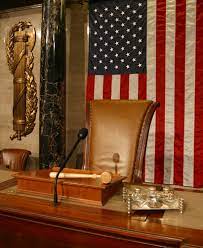
As if in anticipation of the elevation of Jordan, now very less assured, the Lincoln Project has observed: The Speaker of the House, the person who holds the gavel and dictates the legislative agenda of the most powerful country on the planet, will not be one single person.
It’s going to continue to be a collection of radicals and sycophants who are guided by the deranged delusions of the MAGA movement. Most of all, they’re guided by whatever words the Dear Leader whispers into their ear.
That’s all you need to know about this Speaker race.
Amen, while the world goes to Hell in a Handcart, an artist has been commissioned to paint a bunch of narcissi over the door leading to the Chamber, but Jordan will be no longer portrayed.
Mouse Whisper
I asked myself in this year of the Referendum why Mickey was black. It is easy to say that he was drawn in a black and white world, but Walt Disney, in the definition below of Mickey, does not mention the colour of The Mouse.
Disney wrote:
His body was like a pear, and he had a long tail. His legs were pipestems and we stuck them in big shoes (also circular in appearance) to give him the look of a kid wearing his father’s shoes. We didn’t want him to have mouse hands, because he was supposed to be more human. So we gave him gloves. Five fingers looked like too much on such a little figure, so we took one away. That was just one less finger to animate.



